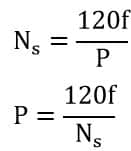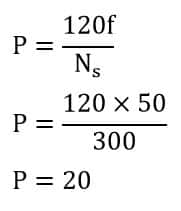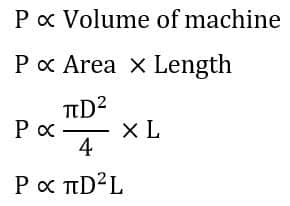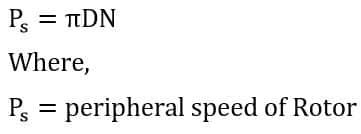Are you curious to know why rotor diameter is more in hydrogenators? This article explains why a larger diameter can lead to better performance and results.
In the hydrogenator, the water turns the turbine blades. The turbine blade assembly is connected to the rotor of the hydrogenator. The speed of the rotation of the rotor is comparatively slow because the water is slow-moving. This means the rotor of the hydrogenator runs at a lower speed.
Now, we want to generate electricity of 50 HZ frequency from the slow-speed rotor, then we need more poles on the rotor. How, Let us understand this concept. The synchronous speed of the electrical machine is ;

From above, it is clear that the generating power frequency depends on the speed and the number of poles. As explained, the hydrogenator is a slow-speed machine, therefore we can get the desired frequency if we increase the number of poles. Let us understand this with an example.
Let the speed of the hydrogenator is 400 RPM, and we need to produce power at 50 Hz frequency, then the number of poles will be;

Thus we need a large number of poles to generate electrical power at a 50 Hz frequency if the speed of the rotor is less. If the rotor RPM is 150 RPM, then the number of poles will be 40.
Now, a question arises, How to accommodate a large number of poles on the rotor? the answer is to increase the diameter of the rotor so that we can accommodate a large number of poles on the rotor. The large diameter allows us to place more coils for field winding. Thus, we can say the large diameter of the hydrogenator is a must for accommodating a large number of poles for the generation of electric power at a 50 Hz frequency.
Will an increase in rotor diameter affect the length of the rotor? definitely yes- when we increase the diameter, the rotor length will reduce according to the diameter. As we all know that the output power of electrical machines depends on the volume of the rotor.

From the above equation, it is clear that to get the same power if the diameter is increased the length of the rotor decrease.
The peripheral speed of the rotor is also very important and it must be kept within its permissible limit. The peripheral speed of the rotor is;

As the speed of the rotor is less in the hydrogenator, we can have a large-diameter rotor. Think, if the rotor has more diameter and if it runs at a higher RPM, what would happen? It will create a large centripetal force on the rotor and the rotor may fly apart. Therefore, a large-diameter rotor is suitable for less RPM operation.
You would have been thinking that it is possible to increase the speed of the turbine by increasing the head of the water. Yes, by doing so, we can increase the speed and consequently, the number of poles will decrease. However, the cost of the increasing head is not economical and moreover, it is difficult to capture the entire kinetic energy of the water. Therefore, for efficient generation, the large diameter rotor of the hydrogenator is the best choice.